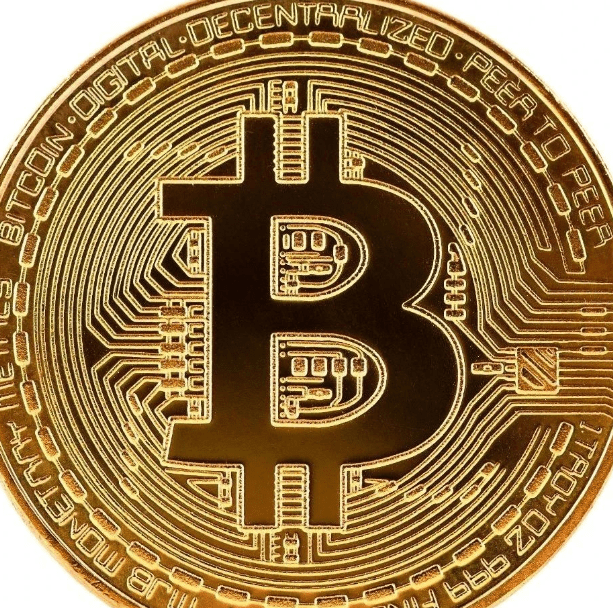Hello everyone, I am Teacher Muqing. Today we are going to talk about a commonly discussed issue in the crypto world that 90% of people fail to address:
You made money in the crypto world; do you know when to leave?
You might think 'I made money, why should I leave?' But the reality is that too many people in the crypto world go from profit to losing everything with just one correction. Not leaving when making money, and being reluctant to sell when it drops, results in watching it rise and losing everything when it falls. Making money is not a skill; preserving it is the true skill.

Analysis of greed psychology: Why are people unwilling to leave?
Let's first talk about the psychological aspect: the root of most people's unwillingness to leave is actually greed.
Have you ever felt this way:
The coin rose by 30%, and you originally planned to sell at 20%;
But when it reached 30%, you wanted to wait a little longer, thinking it might rise another 100%;
Then when the market corrects, you can't bear to sell, thinking 'I'll run when it rebounds';
As a result, after round after round of declines, you go from profit to loss.
This is the classic 'greed + fantasy' combo in the crypto world.
Let me tell you another psychological principle: people find the 'loss of unrealized profits' even harder to bear than 'actual losses'.
You made $100,000, didn't sell, and it dropped back to only $20,000, which is more painful than never having made that $100,000.
Why? Because you watched the money you had slip away right before your eyes.
Characteristics of the crypto world: wild fluctuations, don't fantasize about continuous rises.
The crypto market is an extreme market; its biggest difference from the traditional stock market is that it rises quickly and falls just as quickly.
A piece of good news doubles in a few hours;
A rumor cuts it in half in half a day;
Market makers accumulate, wash out, and sell high, all completed in just a few days.
In such a market, the less you understand the concept of 'taking profits', the easier it is to be harvested.
Let me give you a real scenario:
You bought a meme coin during a bull market, it tripled in 3 days, and you are still waiting for it to increase tenfold. As a result, it plummeted 80% after 4 days. You can't bear to sell, and it no longer rises, becoming your 'faith coin' — you entrusted hope to luck instead of strategy.
Taking profits is the true victory.
Have you heard this phrase: Profits not realized in your account are all illusions.
So, in the crypto world, remember one thing:
'If you didn't sell, it doesn't count as profit.'
No matter how much you believe in a project, no matter how reasonable you think the rise is, if you don't take profits, it doesn't belong to you.
It's like playing a game against a boss; if you get a rare item and don't save, and die the next second, everything resets to zero.
So you need to have a 'realization awareness':
Take profit decisively when it reaches your preset target;
Even if it's not a full sell, you should reduce your position in batches;
Leave a portion to continue speculating, but at least lock in some profits.
A bloody case: a true story of making and losing money.
Here's a real case: I have a friend who bought Solana in 2021 at $3, and it peaked at over $250.
He didn't sell, always thinking it would reach $500, but then it crashed, and now Solana barely rebounds to around $140 after the drop.
He was once a millionaire but never actually received that money.
Countless others did not leave when Luna, FTT, DOGE, and SHIB peaked, ultimately going to zero. These cases all demonstrate: 'Not leaving when making money will force you to leave the market.'
And at that time, leaving is no longer about making money but about being forced to stop loss.
Teaching you how to 'leave beautifully': sharing profit-taking techniques.
Many people say, I want to take profits too, but I don't know when to leave and I'm afraid to go.
So, let me teach you a few practical techniques for leaving:
1. Set profit-taking targets (profit percentage or price level).
For example: set 'sell half when it rises by 50%' or 'I will leave when it hits the target price of $10' when buying.
2. Take profits in batches, gradually realizing gains.
Sell a portion when it rises by 20%;
Sell a little more when it rises by 50%;
You can keep the rest to speculate on future markets, but at least lock in profits.
3. Set time-based profit-taking, realizing gains periodically.
For instance, if you dollar-cost average for a year and sell once per quarter;
This way, you won't be driven by price fluctuations but will systematically realize profits.
4. Use candlestick patterns to assist in judgment.
For example: if the price breaks through the previous high, shows increased volume but stalls, and fails to reach a new high multiple times, that's a signal to leave;
Or if there are consecutive long upper shadows, high-level consolidation, and great news, it often indicates the selling phase.
Conclusion:
Not leaving after making money is the biggest problem in crypto investing.
It's not that you can't choose coins, it's not that you can't set up ambush, but that you are unwilling to 'give up future fantasies' and unwilling to realize current profits.
So, the next time your account turns green, don't think 'it can double again', instead, ask yourself: should I leave? Right now,
is a good opportunity.


